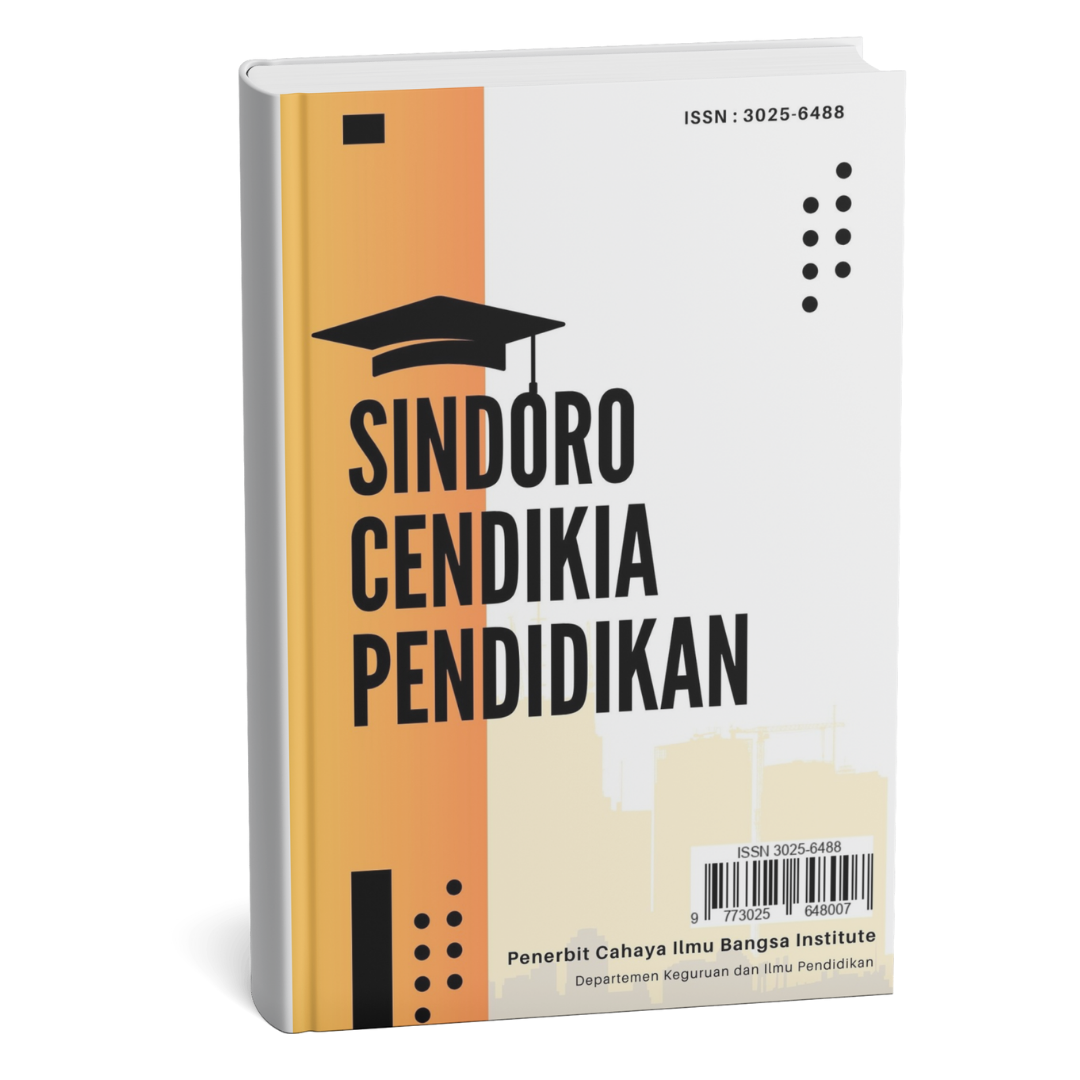THE EFFECTIVENESS OF READTHEORY IN READING COMPREHENSION OF SIXTH SEMESTER STUDENTS AT UNIVERSITAS BHINNEKA PGRI
- Authors
-
-
Mohamad Yunus
Universitas Bhinneka PGRIAuthor -
Ika Rahmawati
Universitas Bhinneka PGRIAuthor
-
- Keywords:
- ReadTheory, Membaca Pemahaman, Pembelajaran Bahasa Inggris, Pre-Experimental Design
- Abstract
-
Penelitian ini bertujuan untuk mengetahui efektivitas penggunaan platform ReadTheory dalam meningkatkan kemampuan membaca pemahaman mahasiswa semester enam di Universitas Bhinneka PGRI. Penelitian ini menggunakan metode kuantitatif dengan desain pre-eksperimental tipe one-group pre-test and post-test. Instrumen yang digunakan berupa tes pilihan ganda yang telah diuji validitas dan reliabilitasnya. Hasil penelitian menunjukkan adanya peningkatan skor rata-rata dari 70,83 pada pre-test menjadi 90,83 pada post-test. Hasil uji paired sample t-test menunjukkan nilai signifikansi sebesar 0,002 (p < 0,05) yang berarti terdapat perbedaan signifikan sebelum dan sesudah penggunaan ReadTheory. Hasil uji reliabilitas juga menunjukkan nilai Cronbach’s Alpha sebesar 0,914 untuk pre-test dan 0,899 untuk post-test yang menandakan bahwa instrumen yang digunakan sangat reliabel. Berdasarkan temuan tersebut, dapat disimpulkan bahwa ReadTheory efektif dalam meningkatkan kemampuan membaca pemahaman mahasiswa. Penelitian ini merekomendasikan agar ReadTheory dapat diterapkan sebagai media pembelajaran tambahan dalam pengajaran membaca di perguruan tinggi.
- Downloads
-
Download data is not yet available.
- References
-
Anqoudi, A. A., Al-Shahrani, H. S., & Al-Shehri, S. A. (2023). Improving EFL learners’ reading motivation with intensive reading using ReadTheory. International Journal of Instruction, 16(1), 1-16.
Capodieci, A., Lachini, S., & Pinto, G. (2020). The use of educational technology for reading instruction in primary school: A meta-analysis. Frontiers in Psychology, 11, 543.
Carrión, P. P. (2018). Online ReadTheory program impact on the development of EFL students' reading skills. International Journal of Social Sciences and Humanities, 2(2), 65-75.
Elleman, A. M., & Oslund, E. L. (2019). Reading comprehension research: Implications for education practice. Policy Insights from the Behavioral and Brain Sciences, 6(1), 3–11.
Heale, R., & Twycross, A. (2015). Validity and reliability in quantitative studies. Evidence-Based Nursing, 18(3), 66-67.
Mackiewicz, J. (2018). The population and sample in educational research. Journal of Research Methodology, 4(1), 45-50.
Moghadam, H. Z., Rafatbakhsh, M., & Fallah, E. (2023). The impact of critical thinking strategies on EFL learners’ reading comprehension. Journal of Language Teaching and Research, 14(3), 582-589.
Özdemir, E., & Akyol, H. (2019). The development of a reading comprehension test: Validity and reliability study. International Journal of Educational Methodology, 5(4), 593-602.
Ph.D. Ummul Aiman, M., Wahyuni, A., & Aryani, S. (2022). Pre-experimental research in education: Concepts and procedures. Journal of Educational Research and Practice, 12(2), 150-158.
Pourhosein Gilakjani, A., & Sabouri, N. B. (2016). How can students improve their reading comprehension skill? Journal of Studies in Education, 6(2), 229-240.
Rodriguez, L. D. (2025). The relationship between reading comprehension and academic performance: A study of socio-economic and cognitive factors. Journal of Educational Psychology, 17(1), 50-60.
Romeo, K. E., Gentile, L. M., & Bernhardt, E. B. (2016). The role of feedback in reading comprehension instruction: A case study of the ReadTheory platform. Journal of Computer-Assisted Learning, 32(6), 574-584.
Sadiku, L. M. (2015). The importance of four skills and their integration in English language teaching. Academic Journal of Interdisciplinary Studies, 4(1), 101-105.
Soruç, A., Çalışkan, E., & Demir, G. (2022). Self-regulation and language skills as predictors of academic success in foreign language learning. Language Learning Journal, 50(1), 45-57.
Tempest, A. (2018). Implementation of ReadTheory in a university EFL context. Asian EFL Journal, 20(2), 68-85.
Yusri, M. (2020). Quantitative research: A guide to method selection and statistical analysis. Educational Research Journal, 8(2), 30-45.
- Downloads
- Published
- 2025-07-03
- Section
- Articles
- License
-
This work is licensed under a Creative Commons Attribution-ShareAlike 4.0 International License.
How to Cite
Similar Articles
- Intan Istiqlalia, Moh. Hanafi, THE USE OF TIKTOK IN TEACHING SPEAKING IN SECOND SEMESTER STUDENTS AT UNIVERSITAS BHINNEKA PGRI , Sindoro: Cendikia Pendidikan: Vol. 17 No. 4 (2025): Sindoro Cendikia Pendidikan
- Multy Fhadilla Masahere, Sudarkam Mertosono, Erniwati Erniwati, THE IMPLEMENTATION OF PREDICTION STRATEGY IN IMPROVING READING COMPREHENSION OF GRADE EIGHT STUDENTS SMP NEGERI 2 BUMIRAYA , Sindoro: Cendikia Pendidikan: Vol. 14 No. 4 (2025): Sindoro Cendikia Pendidikan
- Putri Dwi Rifani, Putri Rahmawati, Raihan Jeffri Sani, Rahmi. RM, Rania Rizkia, Ratunoor Aliya, Ratu Ullyal Fasha, Raudhatul Wusqa, Ravidatl Dzil Izzati, Rusmaniar Rusmaniar, Sarah Nadya, Yeni Marlina, TRANSFORMASI GURU MASA DEPAN MENUJU PROFESIONAL, BERKARAKTER DALAM MEWUJUDKAN PENDIDIKAN YANG BERMAKNA DI ERA 5.0 , Sindoro: Cendikia Pendidikan: Vol. 14 No. 6 (2025): Sindoro Cendikia Pendidikan
- Febi Utari, Nova Apriliya Riyona, Atifa Azzukhrof, PENGEMBANGAN POP-UP BOOK INTERAKTIF SEBAGAI MEDIA PEMBELJARAN PKN MATERI HAK DAN KEWAJIBAN NEGARA DI KELAS IV SEKOLAH DASAR , Sindoro: Cendikia Pendidikan: Vol. 15 No. 2 (2025): Sindoro Cendikia Pendidikan
- Lola Amanda Lola Amanda, Dr.Chandra, M.Pd, Inggria Kharisma, M.Pd, IDENTIFIKASI KESALAHAN DAN TINGKAT KEMAMPUAN MEMBACA PEMAHAMAN LITERAL PADA SISWA KELAS V SD , Sindoro: Cendikia Pendidikan: Vol. 15 No. 10 (2025): Sindoro Cendikia Pendidikan
- M. Yunus Abu Bakar , Nur ‘Aliyah Salsabila, M. Rully Furqon, Alya Salsabila Zhafirah Kabir, PENDEKATAN PEMBELAJARAN BAHASA ARAB YANG EFEKTIF: TINJAUAN TEORITIS DAN IMPLIKASINYA BAGI SISWA , Sindoro: Cendikia Pendidikan: Vol. 14 No. 7 (2025): Sindoro Cendikia Pendidikan
- Ridhokusumo Ridhokusumo, Alfath Bilqisti, M. Yunus Abu Bakar, PENDEKATAN PEMBELAJARAN YANG EFEKTIF DALAM BAHASA ARAB , Sindoro: Cendikia Pendidikan: Vol. 15 No. 7 (2025): Sindoro Cendikia Pendidikan
- Agustina Dwi Setyawati, Marniati, PENERAPAN MODEL PEMBELAJARAN DIRECT INSTRUCTION PADA ELEMEN MENJAHIT PRODUK BUSANA DENGAN MATERI MENJAHIT BUSTIER UNTUK MENGETAHUI HASIL BELAJAR SISWA SMK NEGERI 2 JOMBANG , Sindoro: Cendikia Pendidikan: Vol. 17 No. 8 (2025): Sindoro Cendikia Pendidikan
- Shindy Audiana Putri, Inayatul Ummah, Dadan Setiawan, INOVASI MEDIA KOMIK DIGITAL UNTUK MENINGKATKAN KEMAMPUAN MEMBACA PEMAHAMAN SISWA KELAS V , Sindoro: Cendikia Pendidikan: Vol. 15 No. 8 (2025): Sindoro Cendikia Pendidikan
- Laila Putri Pramesti, Yulia Nugrahini, THE EFFECTIVENESS OF KAHOOT! IN ENGLISH VOCABULARY MASTERY AMONG SECOND SEMESTER STUDENTS AT UNIVERSITAS BHINNEKA PGRI TULUNGAGUNG IN THE ACADEMIC , Sindoro: Cendikia Pendidikan: Vol. 17 No. 5 (2025): Sindoro Cendikia Pendidikan
You may also start an advanced similarity search for this article.






